I am the daughter of a Vietnam Veteran. My father, Benny F. Shown, Sr., served honorably from 1967-1968 with Second Platoon in B Battery of the 29th Artillery. He served with the First Air Cavalry Division, various infantry units, and, in some cases, with Special Forces.
He rarely spoke about his tour of duty. When he did, it was piecemeal and I remember those fragments – haunting stories frozen in time, told with words that still seem to float and linger in the airish mountain breeze. One time my father told me about the “Black Mung,” (Romanized spelling, Hmong and h‘Mong) or “Mountain Fighters” who lived “up the way” in the Appalachian Mountains. He said they fought valiantly for the American troops during the Vietnam War and were given refuge in the United States because they were hunted and killed by the North Vietnamese and the Communist Laotians when Americans left. Further, he said they liked Appalachia because the mountainous region reminded them of their homeland.
May is Asian American and Pacific Islander Heritage Month. Join us as we celebrate the Hmong people who immigrated to the United States, and, in particular, to Appalachia. I’ll begin by offering my apologies to anyone who finds my attempt at honoring these extraordinary people lacking. I’m a pupil myself and have learned as I’ve researched and written. That being said, let’s discover together.
Tidbit of Hmong History
The Hmong people’s origins go back anywhere from 2000 to 4000 years in China. The earliest written record of their existence “is found in the Chinese annals dating to the third century BCE.”1)Duffy, John M. 2007. Writing from These Roots: Literacy in a Hmong-American Community. University of Hawai’i Press. The Chinese call them Miao, which somewhere along the way meant “barbarians.”2)They are called Meo in Laos, which basically means the same thing. (I don’t know about the reader here, but age and wisdom allow me to discern between the true barbarians and those who are labeled as such.) The Hmong themselves translate the name as “free man” or “free people”3)Beghtol, Mary Jo. 1988. “Hmong Refugees and the US Health System.” Cultural Survival. March. and their interpretation certainly rings true throughout their history.
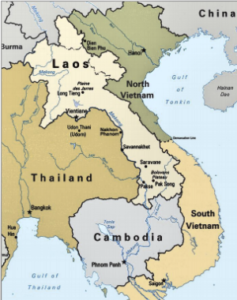 They fled to the southern part of China when the Han invaded sometime in 200s B.C.E. In the 18th century, China’s Qing Dynasty imposed “repressive economic and cultural reforms,” which lasted well into the 19th century.4)K, Mr. 1990. “Hmong.” Devolution of the State. Accessed May 2021. Jane Hamilton-Merritt gives some historical background in her book, Tragic Mountains. According to her, the Qing “wanted Hmong lands” but couldn’t defeat them in combat. Instead, they used psychological warfare tactics. The Qing convinced the Hmong king Sonom5)King Sonom was the last recorded Hmong king in China. to surrender and offered terms of peace. China promised they would be honored and treated fairly. When King Sonom and his court arrived in Peking, however, they encountered Qing’s conspiracy to torture and kill them “as part of a festival.” King Sonom and his entourage “were cut into small pieces” and decapitated with their heads displayed. The “lesser rank” Hmong were executed and the rest were enslaved.6)Hamilton-Merritt, Jane. 1999. Tragic Mountains: The Hmong, the Americans, and the Secret Wars for Laoss, 1942-1992. Bloomington: Indiana University Press. The remainder scattered to other East Asian countries like Vietnam, Laos, Thailand, and Cambodia for safety and better living prospects. They were farmers by trade and lived in mountainous regions. The Hmong who entered Laos went from one tyranny to another, and fought against oppressive political systems. They eventually took up the anti-communist cause.
They fled to the southern part of China when the Han invaded sometime in 200s B.C.E. In the 18th century, China’s Qing Dynasty imposed “repressive economic and cultural reforms,” which lasted well into the 19th century.4)K, Mr. 1990. “Hmong.” Devolution of the State. Accessed May 2021. Jane Hamilton-Merritt gives some historical background in her book, Tragic Mountains. According to her, the Qing “wanted Hmong lands” but couldn’t defeat them in combat. Instead, they used psychological warfare tactics. The Qing convinced the Hmong king Sonom5)King Sonom was the last recorded Hmong king in China. to surrender and offered terms of peace. China promised they would be honored and treated fairly. When King Sonom and his court arrived in Peking, however, they encountered Qing’s conspiracy to torture and kill them “as part of a festival.” King Sonom and his entourage “were cut into small pieces” and decapitated with their heads displayed. The “lesser rank” Hmong were executed and the rest were enslaved.6)Hamilton-Merritt, Jane. 1999. Tragic Mountains: The Hmong, the Americans, and the Secret Wars for Laoss, 1942-1992. Bloomington: Indiana University Press. The remainder scattered to other East Asian countries like Vietnam, Laos, Thailand, and Cambodia for safety and better living prospects. They were farmers by trade and lived in mountainous regions. The Hmong who entered Laos went from one tyranny to another, and fought against oppressive political systems. They eventually took up the anti-communist cause.
The Hmong were one of our greatest allies in the Vietnam War. (Other allies were South Korea, Australia, etc.) Laos, Vietnam, and Cambodia were an Asian trifecta of sorts, a strange communist-tyranny, or the hopes to become such. The United States enlisted Hmong General Vang Pao and his “guerilla army” to fight against the communist Pathet Lao, backed by the USSR, China, and the North Vietnamese.7)Beghtol, Mary Jo. 1988. “Hmong Refugees and the US Health System.” Cultural Survival. March. The CIA recruited “roughly 40,000” Hmong soldiers8)Lindsay, Jeff. 2017. “The Tragedy of the Hmong: The Story of the Hmong People in the United States.” The Hmong in America. Nov 17. in what became known as “The Secret War.”
The Secret War
The Secret War was named so because the United States Congress “had not given authorization” for war outside Vietnam. The reason the war encroached into Laos was to stop the North Vietnamese supply line whose course was “along the mountains of Laos”9)University of North Carolina, Greensboro. n.d. “Hmong Students and UNCG.” UNC Greensboro. Accessed May 2021. in a route known as the Ho Chi Minh Trail.10)Historical Association of Catawba County . n.d. “NC Preservation.” Hmong Keeb Kwm. Historical Association of Catawba County. Former Hmong soldier Xan Mao Xiong explains:
The CIA knew that the northeastern region of Laos [which the 1954 Geneva accords gave to the Communist Pathet Lao to control] was occupied mainly by Hmong, so the CIA recruited Hmong to fight there and farther south along the Ho Chi Minh Trail . . . to prevent the North Vietnamese from transporting weapons, soldiers, and food to their men fighting in South Vietnam. Many American pilots were shot down in Laos, so our job was to rescue them also.
Though we were uneducated and without skills, we received no military training before we were sent into battle. We fought first, then trained afterwards. We helped fight the Communists from 1960 to 1975.11)Chan, Suchen. 1994. Hmong Means Free: Life in Laos and America. Philadelphia: Temple University Press.
The Secret War was “the biggest covert operation in CIA history.”12)Yang, Kao Kalia. 2017. The Latehomecomer: A Hmong Family Memoir. Minneapolis: Coffee House Press. Ervin Davis’s website provides quite a detailed account and history. On the webpage “Laos: The Secret War,” Davis says the Hmong gathered intelligence, performed “counter-insurgency,” protected unofficial U.S. Navigational sites, rescued downed American pilots, were “Trail Watchers” who measured enemy movements. Some were “specially trained individuals” who completed perilous “secret missions inside North Vietnam, China, Cambodia, and ‘other international locations’ that remain still classified.” The Hmong also trained as pilots and “flew with the Secret Air Force” to prevent the enemy’s access to the ‘Ho Chi Minh Trails.’
A retired Chief Master Sergeant who served for 27 years also explains how essential the Hmong were:
The war in Vietnam was fought on several fronts and I served in two of them. The main American battle ground was in . . . South Vietnam. In order for the North Vietnamese forces to fight us there, it was necessary for their supplies and troops to go through Laos and Cambodia on the Ho Chi Minh Trail . . . About 99% of the combat forces on the ground were Hmong irregulars who were persuaded by Americans . . . to fight the N. Vietnamese . . . We supplied air cover, but every combat trooper knows aircraft can’t take and hold ground. We depended on the Hmongs to do this.13)Lindsay, Jeff. 2017. “The Tragedy of the Hmong: The Story of the Hmong People in the United States.” The Hmong in America. Nov 17.
With hindsight, the Hmong seemed expendable. Each Hmong death “meant one less body bag coming back to the U.S. . . . important [because it lessened] a political price tag, as the American public grew weary of the war effort.”14)LoBaido, Anthony C. 1999. “The Great Betrayal.” World Net Daily, Nov 17: Web. The Hmong lost ¼ of their entire population. After most of the men died, the CIA recruited boys – ten, eleven, and twelve years old – “and asked them to do the work that their fathers could not finish.”15)Yang, Kao Kalia. 2017. The Latehomecomer: A Hmong Family Memoir. Minneapolis: Coffee House Press. The Hmong believed (rightfully so) that their service to the United States garnered at least recognition as U.S. soldiers. The CIA had guaranteed the Hmong a place in long-term U.S. plans; however, the organization had no “authority to do this, nor the means to carry out what they promised.”16)LoBaido, Anthony C. 1999. “The Great Betrayal.” World Net Daily, Nov 17: Web.
American Flight
Then, in 1975 the American military high-tailed it out of Laos. As Kao Kalia Yang says in her book The LateHomecomer: A Hmong Family Memoir:
The Hmong knew that the Americans had left: one day there were American pilots landing planes on the airstrip, tall men with fair skin walking around the village, laughing and buying local food items, giving candy to the small children. And then one day the planes flew away into the fog of the clouds, passed over the dark green mountain tops, and did not return.
The Communist Pathet Lao were victorious. The United States hadn’t prepared for defeat, let alone “for evacuating the stranded Hmong.”17)Beghtol, Mary Jo. 1988. “Hmong Refugees and the US Health System.” Cultural Survival. March. The American retreat left the Hmong raw and vulnerable. Some of the high-ranking Hmong and Lao officers were evacuated at the outset.18)Burnett, L.D. 2018. “Critical Connections: The Hmong People and America’s Promise for Immigrants.” S-USIH (U.S. Intellectual History). Dec 15. The rest became targets exposed to a brutal reprisal from Laos and Vietnam, who “sought to punish” them. In the May 1975 issue of Communist newspaper Khaosan Pathet Lao, Laos announced its agenda to “extirpate, down to the root, the Hmong minority.”19)Yang, Kao Kalia. 2017. The Latehomecomer: A Hmong Family Memoir. Minneapolis: Coffee House Press. At first, the Hmong waited for the Americans to come rescue them. Eventually, they realized that death was the only thing coming. What was perpetrated on the Hmong was genocide. Russian-made20)LoBaido, Anthony C. 1999. “The Great Betrayal.” World Net Daily, Nov 17: Web. biochemical warfare showered across Hmong lands in the form of “yellow rain” that “killed hundreds.”21)Lindsay, Jeff. 2017. “The Tragedy of the Hmong: The Story of the Hmong People in the United States.” The Hmong in America. Nov 17.(From what I understand, the chemical weapons were used as late as the 1990s.) The Hmong fled to refugee camps in Thailand – a journey with little food, no shoes, through a briar-infested, harsh-terrain jungle, in pouring rain, sickened, disheartened, and with the ever-present fear of capture and death. Though they could breathe a tad easier, their Thai welcome was hardly pleasant or humane.
The aforementioned Chief Master Sergeant notes of the U.S. withdrawal and its aftereffects:
After the fall of Saigon we pulled out of Southeast Asia and left the Hmongs to continue the fight without air support. When we left, the Hmong had to fight both the Laotians and the N. Vietnamese. They could not fight tanks, heavy artillery and aircraft with rifles. A great many Hmongs were slaughtered in their villages. Many were slaughtered at airfields where they waited for evacuation planes that never came. A few were able to fight every foot of the way across Laos and cross the Mekong River into refugee camps in Thailand where they were further mistreated by rather corrupt UN and Thai officials. Out of an estimated 3,000,000 prewar Hmong population less than 200,000 made it to safety . . . The Hmongs gave up literally everything for us: their country, their homes, their peaceful way of life, most of their families, everything that we would cherish.22)Lindsay, Jeff. 2017. “The Tragedy of the Hmong: The Story of the Hmong People in the United States.” The Hmong in America. Nov 17.
The Spark of a Promise Fulfilled
The first Hmong immigration to the United States was in early 1975. However, arguably the largest wave occurred between 1987-1994.23)Asian Nation. n.d. “Hmong Americans.” Asian Nation: Asian American History, Demographics, & Issues. Accessed May 2021.24)Other countries also resettled the Hmong: Australia, France, Canada, Germany. Around 8 million Hmong still live in China. Resettlement agencies initially scattered the Hmong throughout the U.S., with hopes that they would continue their farming practices for big agriculture.25)Asian Nation. n.d. “Hmong Americans.” Asian Nation: Asian American History, Demographics, & Issues. Accessed May 2021.26)I also found sources that said scattering the Hmong also protected the group from certain racist elements. The largest Hmong settlement was in California, with Minnesota and Wisconsin coming in second and third, respectively.
The U.S. resettlement strategy was not terribly successful. The Hmong, ever the independent and self-sustaining people, had no desire to be farmworkers for a “corporate agricultural system” and they preferred to be together within their own “clan.” The population shifted toward the Midwest and the South in the 1990s. Today, they are considered one of “the fastest growing Asian group[s]” in the nation.27)University of North Carolina, Greensboro. n.d. “Hmong Students and UNCG.” UNC Greensboro. Accessed May 2021.
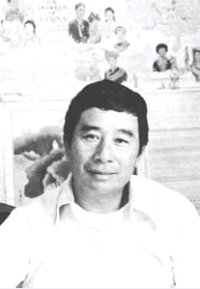
In North Carolina, churches sponsored Hmong refugee families. The parishes donated clothing, furniture, household appliances. The church found the Hmong places to work in mills, factories, and plants. Some continued farming. One Hmong man, former soldier Captain Kue Chaw, travelled several states to find a better place for his people. Once he arrived at Marion, North Carolina, he surveyed the mountainous land and thought of his home in Laos. He and his family moved there and more Hmong followed, making North Carolina the “fourth largest resettlement state.”28)University of North Carolina, Greensboro. n.d. “Hmong Students and UNCG.” UNC Greensboro. Accessed May 2021. Chaw became the director of the Hmong Natural Association – a group of Hmong people who support North Carolina’s Hmong settlers.29)Herndon, Nancy. 1987. “A New Life in the ‘Land of Opportunity.’ Relocated Hmong Refugees Make a Home for Themselves in Rural North Carolina.” The Christian Science Monitor, June 11.
How the Valiant are Treated
Laotians hate the Hmong because of their historical stance against communism. In the 1990s, the United States and United Nations made some sort of deal with Laos and Thailand to repatriate the Hmong back to Laos in what some view as forced deportation.30)Lindsay, Jeff. 2017. “The Tragedy of the Hmong: The Story of the Hmong People in the United States.” The Hmong in America. Nov 17. The result was a “full-scale riot” inside the refugee camps.31)LoBaido, Anthony C. 1999. “The Great Betrayal.” World Net Daily, Nov 17: Web. Who would want to return to a country that systematically annihilates your people? The Laotian government continues to persecute the Hmong and even children are no exception. In her 2011 Independent newspaper article “Children of Laos tribe ‘butchered by soldiers,’” Kim Sengupta writes that “Laotian forces have been accused of raping, disembowelling [sic] and murdering children belonging to the minority Hmong tribe in a campaign of state-sponsored terror.” Amnesty International says the acts constitute war crimes and violates international humanitarian laws.
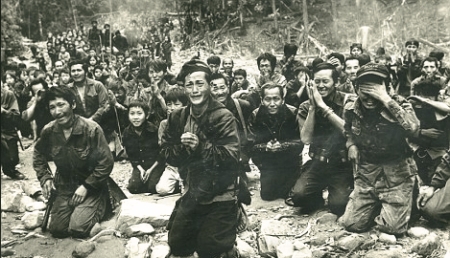
Some solutions are not helpful. In the early 2000s, UNICEF (of all organizations) engaged in a quasi-sterilization endeavor with “population control efforts against the tribe, trying to limit members to three children per family.”32)LoBaido, Anthony C. 1999. “The Great Betrayal.” World Net Daily, Nov 17: Web. (The Hmong are a clannish people accustomed to large families within a surname.)
When the Hmong arrived in the United States, culture shock was an understatement. Theirs is an agrarian culture. Their religious beliefs are based in animism and they seek guidance and healing from Shamans. They emphasize close-knit, strong families and respect for elders. In Laos and Vietnam, they had no idea about technology, had no television, no electricity or running water, etc. They also had no knowledge about American society and laws. For example, one can’t keep chickens in the basement and one can’t grow medicinal opium in the backyard.33)Ranard, Donald A. 1986. “The Refugees and Their Carolina Roots.” The Washington Post, Nov 29. The land was welcoming. Many American people were not – at least initially. In North Carolina, for example, the Hmong faced scrutiny, suspicion, and racism.
Rumors abounded:
- The Hmong fought against American soldiers in Vietnam.
- They don’t pay taxes.
- They’re “breeders par excellence.”
- They practice witchcraft.
- They don’t bathe.
- They bring disease.
- They live twenty to thirty to a house.
- They steal neighborhood pets and eat them.34)Ranard, Donald A. 1986. “The Refugees and Their Carolina Roots.” The Washington Post, Nov 29.35)Burnett, L.D. 2018. “Critical Connections: The Hmong People and America’s Promise for Immigrants.” S-USIH (U.S. Intellectual History). Dec 15.
Racists threatened to burn down churches where Hmong worshipped.36)Ranard, Donald A. 1986. “The Refugees and Their Carolina Roots.” The Washington Post, Nov 29. But the churches were “an influential force” in the communities and became the sanctuary and safe-haven for the Hmong. Churches dispelled the rumors one by one and, eventually the Hmong were embraced by most or tolerated by a minority.37)Herndon, Nancy. 1987. “A New Life in the ‘Land of Opportunity.’ Relocated Hmong Refugees Make a Home for Themselves in Rural North Carolina.” The Christian Science Monitor, June 11. But 9/11 changed so many things in our country and the world.
In 2007, the Patriot Act “labeled Hmong as terrorists” and blocked more from coming to the U.S.”38)Asian Nation. n.d. “Hmong Americans.” Asian Nation: Asian American History, Demographics, & Issues. Accessed May 2021.
The Associated Press:
Under provisions of the USA Patriot Act and the Real ID Act, the Hmong who fought alongside the Americans in the “secret war” against communists in Laos are considered terrorists and are therefore ineligible for asylum or green cards. These are laws from the same Congress that in 2000 passed a law easing the citizenship requirements for the Hmong in recognition of their Vietnam era efforts.39)Asian Nation. n.d. “Hmong Americans.” Asian Nation: Asian American History, Demographics, & Issues. Accessed May 2021.
Just last year, the Hmong faced the threat of deportation from the United States back to Laos. Minnesota Governor Tim Walz penned a letter to then Secretary of State Mike Pompeo stating in part:
Our Hmong and Lao neighbors are small business owners, combat veterans who fought alongside American soldiers, and passionate people who have shaped Minnesota’s culture into what it is today. Most of the Southeast Asian Americans with a deportation order have never lived in those countries or no longer have ties there. Uprooting this community is unjust, immoral, and a betrayal of our country’s patriotic duty to these refugees . . . As the Governor of Minnesota, I voice strong opposition to any agreement that results in the deportation of Hmong and Lao people . . .40)Gockowski, Anthony. 2020. “Walz Sends Letter to Trump Admin in Response to ‘Immoral’ Efforts to deport Hmong, Lao Residents.” Minnesota Sun, Feb 25.
Perhaps the most hurtful thing our nation has done, aside from abandoning them when they needed us, has been not recognizing them as United States Veterans, even though they fought under U.S. orders during the Vietnam War. When Veterans are recognized in a group, Hmong soldiers are not. When Veterans are asked to stand for applause or appreciation, Hmong soldiers cannot. They don’t receive military benefits as combat veterans, “even though many of them fought as U.S. combat infantrymen for 10-plus years.”41)LoBaido, Anthony C. 1999. “The Great Betrayal.” World Net Daily, Nov 17: Web.
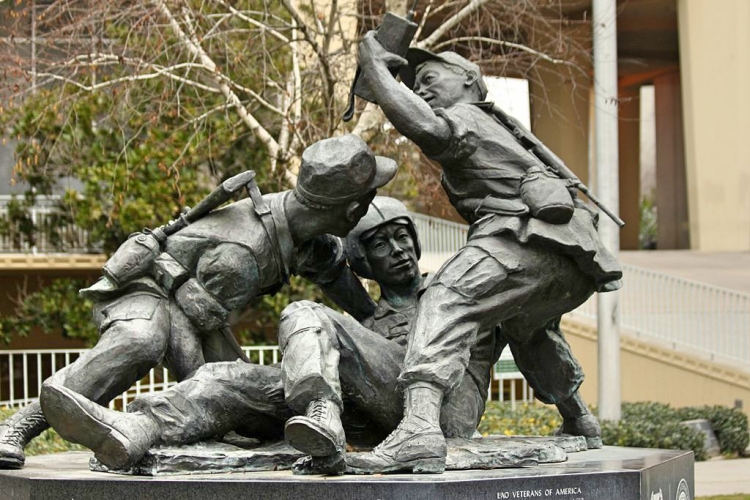
Vietnam Veteran, Bob Anderson said:
The Hmong who fought . . . understood they were fighting for the Americans and that they were in some sense of an American army. They often mention the promise that was made . . . that if the war went badly, the Hmong would be taken care of. The Hmong were used.
Yet, history has shown the Hmong are a strong people who endure despite the opposition and oppression around them. They are a proud people who fight for justice and democracy, rights and democratic ideals. Kue Chaw, perhaps, sums up the spirit of the Hmong people in America. He penned a hand-written sign that reads: Yoo are now in the land of opportunity. “I never dreamed I would come some day to a developed country like this,” Kue told reporter Nancy Herndon from the Christian Science Monitor. In another interview for the Alicia Patterson Foundation, Kue says, “I will not be involved with the dreams of angry men. We have lost one generation. We cannot wait until the third generation . . . As a minority, we must work harder, study harder, be the best and more.”
References
| ↑1 | Duffy, John M. 2007. Writing from These Roots: Literacy in a Hmong-American Community. University of Hawai’i Press. |
|---|---|
| ↑2 | They are called Meo in Laos, which basically means the same thing. |
| ↑3, ↑7, ↑17 | Beghtol, Mary Jo. 1988. “Hmong Refugees and the US Health System.” Cultural Survival. March. |
| ↑4 | K, Mr. 1990. “Hmong.” Devolution of the State. Accessed May 2021. |
| ↑5 | King Sonom was the last recorded Hmong king in China. |
| ↑6 | Hamilton-Merritt, Jane. 1999. Tragic Mountains: The Hmong, the Americans, and the Secret Wars for Laoss, 1942-1992. Bloomington: Indiana University Press. |
| ↑8, ↑13, ↑21, ↑22, ↑30 | Lindsay, Jeff. 2017. “The Tragedy of the Hmong: The Story of the Hmong People in the United States.” The Hmong in America. Nov 17. |
| ↑9, ↑27, ↑28 | University of North Carolina, Greensboro. n.d. “Hmong Students and UNCG.” UNC Greensboro. Accessed May 2021. |
| ↑10 | Historical Association of Catawba County . n.d. “NC Preservation.” Hmong Keeb Kwm. Historical Association of Catawba County. |
| ↑11 | Chan, Suchen. 1994. Hmong Means Free: Life in Laos and America. Philadelphia: Temple University Press. |
| ↑12, ↑15, ↑19 | Yang, Kao Kalia. 2017. The Latehomecomer: A Hmong Family Memoir. Minneapolis: Coffee House Press. |
| ↑14, ↑16, ↑20 | LoBaido, Anthony C. 1999. “The Great Betrayal.” World Net Daily, Nov 17: Web. |
| ↑18, ↑35 | Burnett, L.D. 2018. “Critical Connections: The Hmong People and America’s Promise for Immigrants.” S-USIH (U.S. Intellectual History). Dec 15. |
| ↑23, ↑25, ↑38, ↑39 | Asian Nation. n.d. “Hmong Americans.” Asian Nation: Asian American History, Demographics, & Issues. Accessed May 2021. |
| ↑24 | Other countries also resettled the Hmong: Australia, France, Canada, Germany. Around 8 million Hmong still live in China. |
| ↑26 | I also found sources that said scattering the Hmong also protected the group from certain racist elements. |
| ↑29, ↑37 | Herndon, Nancy. 1987. “A New Life in the ‘Land of Opportunity.’ Relocated Hmong Refugees Make a Home for Themselves in Rural North Carolina.” The Christian Science Monitor, June 11. |
| ↑31 | LoBaido, Anthony C. 1999. “The Great Betrayal.” World Net Daily, Nov 17: Web. |
| ↑32, ↑41 | LoBaido, Anthony C. 1999. “The Great Betrayal.” World Net Daily, Nov 17: Web. |
| ↑33, ↑34, ↑36 | Ranard, Donald A. 1986. “The Refugees and Their Carolina Roots.” The Washington Post, Nov 29. |
| ↑40 | Gockowski, Anthony. 2020. “Walz Sends Letter to Trump Admin in Response to ‘Immoral’ Efforts to deport Hmong, Lao Residents.” Minnesota Sun, Feb 25. |
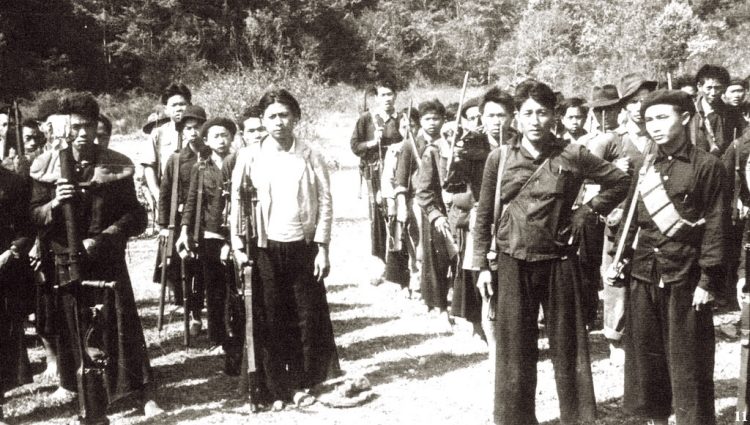









Son Erik lives across the street from a Hmong family in Newton, NC, near Hickory, NC, where a community of Hmong resettled. Interesting how many of their traditions they have kept, including burial practices as they have their own funeral home. Enjoyed the article as it reminds me that there are many diverse Appalachians. And the region is richer for it.
Delonda, Thank you for this article on the Hmongs. We all need to be aware of their sad history and America’s part in it. Larry and I lived in Fresno, California, where a large population of Hmongs had settled. Fresno residents credited them with growing the best strawberries in the state and they followed one crop with another, selling not only commercially, but in many roadside stands. Eating a freshly picked strawberry, fully ripened, sweet and juicy, was a wonderful mouth watering treat. I have to say I have never taken a more delicious bite.
I’m glad you liked it, Peg. I was so happy to share a little of Hmong history and experiences. I was intrigued back when my dad told me about them, and Appalachia Bare afforded me the avenue to research and share. Strawberries – yummm.
I really enjoyed reading your article again I re-read your dad’s journal and think about when we got to Vietnam the sand was up to our ankles and we were wandering how do we fight in all this sand but we were just kidding around passing the time trying not to be home sick but we were at a replacement center then getting our gear together that’s when we got separated but I still think about him every single day and I know we made things more bearable while we were together and I enjoy your writing and just want to say hi and hope all is well with you may God Bless and keep you safe
Hi I Hmong today February 20th 2025
1960 my green [grand?] father and my dad, him
Other brothers are solders for USA 🇺🇸 fighting for freedom and protection USA.
The names are, Mr. Her Koua, Mr. Her Ger, my older brother Tou Liang Her, Mr.Her wa Doua, my dad Mr. Tong see and include my green father all my family got killed by Communists because they were solders with USA fighting for freedom,
of my brother and who solders fighting with America for freedom and they are getting killed by
Communists as North Vietnam at that time.
Today some Hmong just like my ages don’t have father and green father in USA.
We los Country, land peoples lifes with USA 🇺🇸.
We are USA 🇺🇸. THANK.